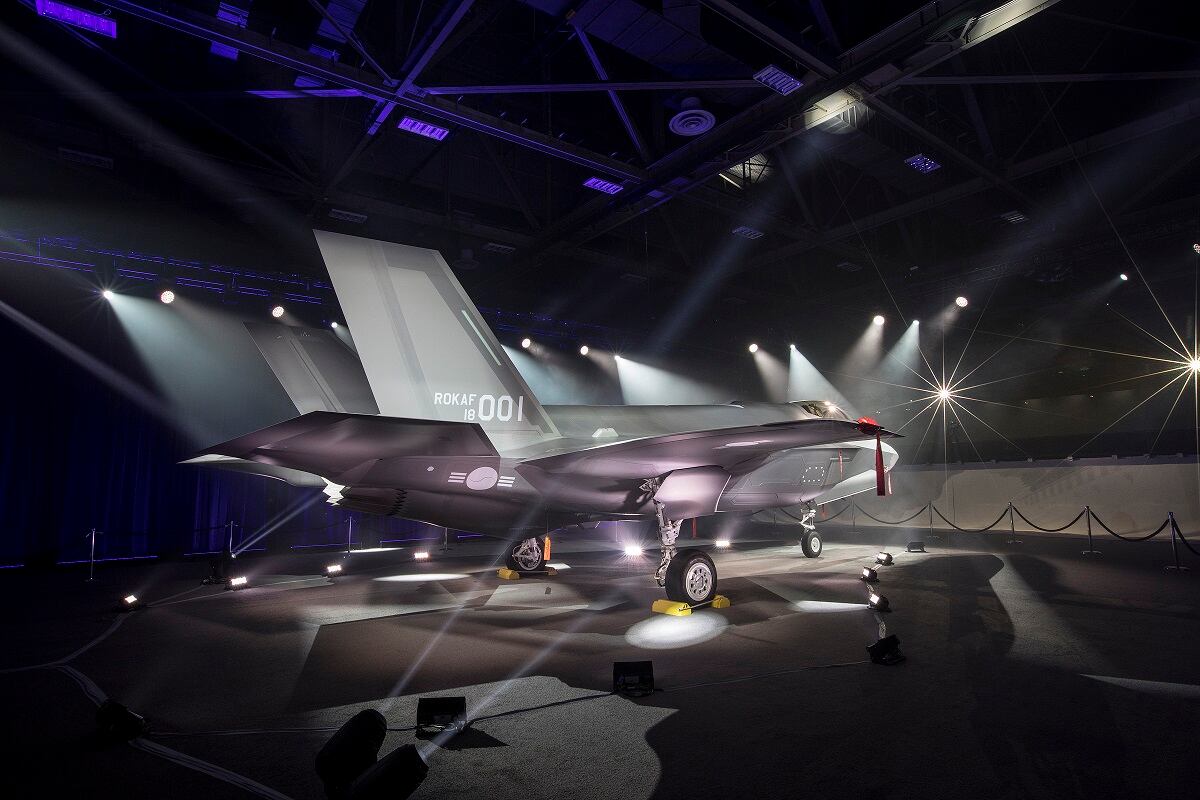SEOUL, South Korea ―The KF-X fighter jet development partnership between South Korea and Indonesia is in tatters, according to defense sources in South Korea and Indonesian media reports.
Indonesia is said to have complaints about its contracts with South Korea over technical benefits and export license of the fighter, dubbed IF-X in Indonesia.
Indonesia, which is a key arms export partner with South Korea, is the sole foreign partner to fund 20 percent of the $7.5 billion KF-X project.
On May 1, Indonesia’s Antara news agency reported the Indonesian Defence Ministry is renegotiating the joint fighter development program.
“The renegotiation is necessary to make clear Indonesia’s gain from the program, as the project would financed with fund from the state budget,” ministerial spokesman Brig. Gen. Totok Sugiharto was quoted as saying.
Totok said Indonesia may neither sell the IF-X aircraft to other countries nor locally produce some components due to contract restrictions.
RELATED

He added his country sees no future for cooperation, partly due to U.S. intervention that is restricting research that would help produce the aircraft, according to the news agency. He did note, however, that he hopes the joint program will continue.
Earlier, the prospect of Jakarta’s termination of the IF-X participation rose after the Indonesian government failed to pay some $130 million of its contribution, which was due in December. About 80 Indonesian workers taking part in IF-X development and production returned home earlier this year, stoking speculation that something was awry.
An engineer with Korea Aerospace Industries, or KAI, said Indonesian engineers dispatched to South Korea had difficulty studying and researching key KF-X technologies.
“Frankly, the Indonesian delegation was restricted from accessing many part[s] of KF-X technologies and studies, particularly from the ones regarding the U.S.,” the engineer told Defense News, speaking on condition of anonymity. “Given Indonesia foots one-fifth of the KF-X development costs, it was reasonable in some sense that Indonesian engineers could feel cramped about technical advantages through the joint program.”
The KF-X fighter program, also funded by the South Korean government and KAI, involves integration of key U.S. advanced technologies, including engines, armament, flight control systems and others, according to the engineer.
In January, a delegation of the U.S. Defense Technology Security Administration visited South Korea‘s Agency for Defense Development and KAI to review KF-X technology transfer issues, according to the engineer.
“It was true that U.S. engineers dispatched to the KAI headquarters were sensitive about a possible leakage of U.S. technologies to Indonesian workers,” he added.
The Defense Acquisition Program Administration, or DAPA, denied speculation that the KF-X partnership with Indonesia is in trouble.
“Despite media reports about KF-X troubles, Indonesia has not notified us of any issue with renegotiation or termination of the KF-X cooperation,” DAPA spokesman Kang Hwan-seok said. “We were told that the Indonesian government awaits parliamentary approval of paying unpaid development costs."
Indonesian Defence Minister Ryamizard Ryacudu also dispelled worries about a possible breakup of the KF-X collaboration.
Ryamizard was quoted by Antara as saying on May 4 during a meeting with local reporters at a marine camp that the joint fighter development program will continue, citing Indonesia’s investment of some 3 trillion rupiah (U.S. $215 million) to this day.
But Ryamizard admitted there are some differences between Jakarta and Seoul over the IF-X tech transfer, stressing Indonesia should have rights to sell IF-X fighters to other countries, according to the news agency.
Under a 2016 deal, Indonesia joined hands with South Korea to develop a 4.5-generation fighter aircraft with the investment of about $1.3 billion by PT Dirgantara Indonesia. Six prototypes are to be built, with the first test flight due in 2022. Final development is expected to be completed by 2026 to replace the South Korean Air Force’s older fleet of F-4s and F-5s. Indonesia needs at least 50 IF-Xs to come off its final assembly production lines in Indonesia.
In spite of both governments’ efforts to calm the KF-X partnership controversy, experts in Seoul anticipate more disputes.
“If Indonesia insists renegotiation to sell IF-X jets to other countries, the South Korean government would jib at the demand because even South Korea might have some difficulties selling the KF-X affected by the U.S. technology-protection policy,” said Kim Dae-young, a research fellow of the Seoul-based Institute for National Security Strategy.
“For Jakarta, geopolitical factors could be an obstacle to continuing the joint program,” the researcher said, referring to Indonesia’s long-standing military-technical relations with Russia. Last year, Indonesia decided to procure 11 Russian-made Su-35 multirole fighter aircraft to be delivered this year.
One KAI engineer expressed concern that Indonesia’s possible pullout from the joint program as a partner that bears some development costs ”could erode momentum for the fighter development project. It also could cause problems in securing additional budget.”
Email: jeff@defensenews.com
Jeff Jeong was the South Korea correspondent for Defense News.








